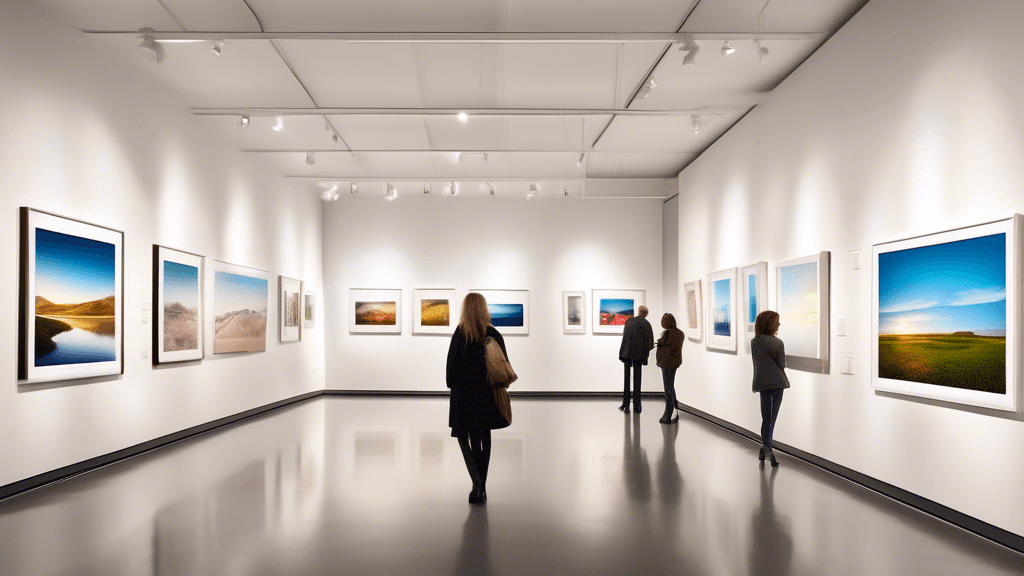
Exploring Landscape Photography in Fine Art Galleries
Share
The Artistic Merit of Landscape Photography in Fine Art Galleries
For centuries, landscape photography has captivated audiences, evolving from simple nature snapshots to profound expressions of environmental storytelling. Today, fine art galleries around the world celebrate landscape photography as a significant art form that bridges the gap between nature and human emotion. But what exactly makes landscape photography a staple in fine art galleries? And how can both amateur and seasoned photographers leverage their work to capture the complexities of our environment?
Understanding Landscape Photography in the Realm of Fine Arts
Landscape photography, in the context of fine arts, goes beyond merely capturing beautiful sceneries. It’s an artistic pursuit that involves a deep interpretation of the natural world. This genre of photography challenges artists to communicate themes, evoke emotions, and provoke thought through carefully composed shots of natural landscapes.
Notable photographer Ansel Adams, known for his black and white landscapes, famously said, Landscape photography is the supreme test of the photographer - and often the supreme disappointment. This quote highlights the complexities and demands of mastering this art form, emphasizing that true landscape photography is more than just technical prowess; it’s about conveying a deeper message or feeling.
Key Components of Successful Landscape Photography
To truly resonate within the walls of a fine art gallery, landscape photographs must embody certain elements:
- Composition and Perspective: Successful landscape photography offers a unique perspective or a new angle on familiar scenes. Composition rules, such as the rule of thirds or leading lines, help in guiding the viewer's eye and creating a harmonious balance within the frame.
- Lighting: The use of natural light plays a crucial role. The time of day – during golden hours (shortly after sunrise or before sunset) or blue hours (just before sunrise and after sunset) – often produces more dramatic and visually appealing shots.
- Emotion and Storytelling: Great landscape photos tell a story or evoke an emotion. Whether it’s the serene tranquility of a calm lake or the rugged melancholy of a stormy beach, the best landscapes stir something in the viewer.
- Technical Quality: Fine art galleries demand high technical excellence in terms of focus, depth of field, and clarity. This technical quality ensures that the photographic work can be displayed at large scales and still retain its impact and detail.
Challenges in Landscape Photography
As Ansel Adams’ quote suggests, landscape photography is not without its challenges. Photographers often face unpredictable weather conditions, accessibility issues to remote locations, and the difficulty of capturing fleeting natural moments. Moreover, the environmental impact of frequent travel to pristine landscapes is a growing concern. Ethical practices and sustainability are becoming integral parts of the narrative in contemporary landscape photography.
The Role of Fine Art Galleries
Fine art galleries play a crucial role in elevating landscape photography to an art form recognized not just for its beauty but for its ability to communicate larger environmental and social messages. Galleries provide a platform for photographers to showcase their work, but they also curate pieces that reflect current themes and discussions within society — such as climate change, conservation, and human impact on the earth.
Galleries are often the bridge between the artist and the public, helping to interpret the artist’s vision and facilitating a deeper appreciation of the work. They also contribute to setting trends in the art market, influencing which themes or styles become more popular.
Concluding Thoughts
Landscape photography in fine art galleries offers a rich tapestry of aesthetic beauty and poignant storytelling, challenging both the artist and the viewer to engage with the natural world in thoughtful, often transformative ways. For photographers aspiring to see their work displayed in such esteemed venues, it requires mastery of both technical skills and the ability to capture or evoke deeper meanings through nature.
If you are passionate about landscape photography, consider how your work can contribute to important conversations about our environment. Take your camera, explore the natural landscapes that inspire you, and remember, each photograph is not just a reflection of the world — it is a potential dialogue with audiences about the significance and fragility of our planet.
Whether you are an amateur just starting out or a seasoned professional, let’s continue to push the boundaries of what landscape photography can achieve in the world of fine art.





